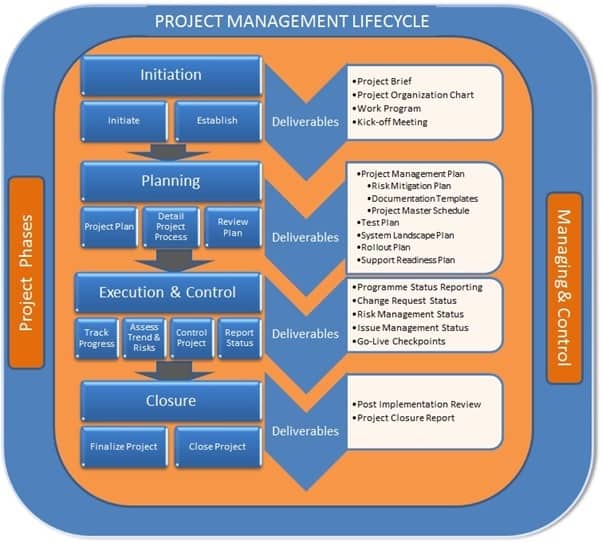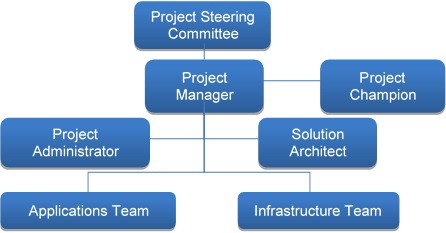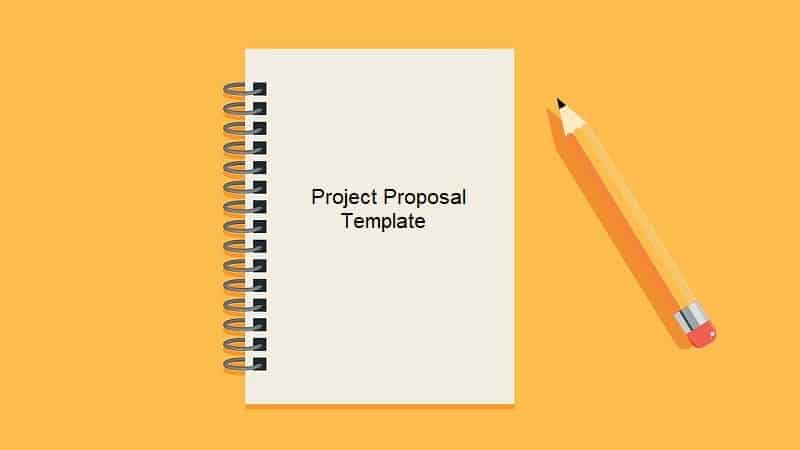Download this free Project Proposal template and use it for your new project. Scroll down to the bottom of the page for the download link.
1 Executive Summary
An executive summary is a brief overview of a report designed to give readers a quick preview of its contents. Its purpose is to consolidate the principal points of a document in one place. After reading the summary, your audience should understand the main points you are making and your evidence for those points without having to read every part of your report in full.
2 Background
The background of your proposal will provide context to the information discussed throughout the project proposal. The background information will discuss your problem statement and rationale. It helps readers understand your reasons for preparing the project proposal.
Cloud computing is not a technology but a model of provisioning and marketing IT services that meet certain characteristics. Cloud is all about computer services, not products:
- The infrastructure is shared. Multiple clients share a common technology platform and even a single application instance.
3 Proposed Solution
Proposed Solution means the combination of software, hardware, other products or equipment, and any and all services (including any installation, implementation, training, maintenance and support services) necessary to implement the solution proposed.
4 Project Management Methodology
The project management methodology will ensure that the delivery will be of the highest standards and within deadlines. This will require full participation from all parties. By working together, knowledge and expertise will be transferred and this guarantees a smooth day-to-day operation. Full commitment and direct involvement from all parties related will ensure a high degree of successful implementation.
In line with the project objectives, PMBOK project management methodology will be adopted for the project management and control.

4.1 Stage 1: Project Initiation
The Project initiation consists of those tasks that must be undertaken at the start of the project in order for a solid foundation to be set for all subsequent stages. The key tasks are described in the following subsections.
4.1.1 Start-up Familiarisation
This general task covers starting the project, setting direction and getting the initial team members up to speed. The activities will include:
- Project start-up meeting between the project managers and project owners and project champions;
- Kick-off meeting for the purpose of introductions, any initial business, requests for information, contacts within Clients’ and other project teams;
- Setting up project administrative environment and initialisation of project processes;
- Resource staff for all the roles in the project. This will include developers and teams leaders of each project stream.
4.2 Stage 2 : Project Planning
This initial activity will involve the Clients’ Project Sponsor, Project Champions, Project Manager, Project Managers and Solution Architect resulting in a project plan, which will clearly define:
- Milestones for project stages and key deliverables;
- A detailed work breakdown structure;
- A detailed schedule of all activities and any dependencies between those activities;
- Team structure;
- Detailed dependencies on Clients’ and the earliest and latest dates by which each must be met;
- Any external dependencies between work packages;
- Risks and any containment and contingency plans for those identified;
A second output from this activity will be a detail process plan, which will formalize the following area of project operations:
- Project Overview and lifecycle definition;
- Definition of lifecycle support processes such as documentation, configuration management, requirement management and tracking, etc;
- Definition of management processes such as planning controls, work delegation and monitoring, risk management, status reporting, etc;
- Definition of organisational processes to ensure that the requirements of Clients’ are being met and that the work is being conducted within the project methodology.
The Project Management Plan will then be presented to Clients’ for review and sign-off.
4.3 Stage 3: Execution & Control
4.3.1 Scoping and Analysis Stage
During this stage, details of the solution architecture to meet the business requirements are documented in the overall system architecture plan.
4.3.2 Define Technology and Architecture Requirement Analysis
In this process, we will define the Technology and architecture components required as defined in the System Blueprint and within the scope defined in the Project Management Plan which includes the followings:
- Overall high level design of the solution implementation
- Systems Integration Requirements
- Production of the Solution Architecture Requirements
- Solution Architecture Specification design and agreement of the business processes, detailed platform integration, hardware and software sizing to prove and finalise the physical architecture
4.3.3 Design Stage
During this stage, we will analyze and demonstrate on how the overall solution configuration and design will (with appropriate processes) meet the systems architecture requirement specification. It provides the basis upon which the functions and services can be mapped and built. The approach for design specification confirmation is through design, review and acceptance. The followings are the key activities involved in this stage:
- Confirmation of the application & system configuration and Integration and interface being used;
- Design for development of gaps in application & system architecture
- Designing Reporting format for the managed services and security
4.3.4 Testing Stage
We will employ its approach to the configuring of the solution. During this stage, deliverables may be produced. However, the configured solution will be installed and integrated at the actual site for further functional and operational testing. The followings are the testing process to be conducted at site:
4.3.5 User Acceptance Test
At the start of this stage, the User Acceptance Test Plan will be generated defining the detailed approach for performing the acceptance tests, which will be targeted at demonstrating:
- The quality and completeness of the setup;
- Business Scenarios of the solution and the associated links;
- Integration Functional and Scenarios testing of the overall application & infrastructure architecture.
As part of the plan, we will incorporate the User Acceptance Test specification will be produced that describe the individual acceptance tests. This will form the basis for the User Acceptance Test Specifications. The basis of the Acceptance Test Design Specifications is verified against the Design Requirement Specifications signed off at the beginning of the project design stage.
The strategy for User acceptance is for us to demonstrate its solution against the agreed Acceptance Test Specifications. Dry runs of User Acceptance Testing (UAT) will be performed by us followed by a formal UAT demonstrated by us to Clients’ will be completed when all exit criteria, as defined in the User Acceptance Test Plan and Specification, have been satisfied or the agreed time limit for testing has been reached. Our project approach, schedule and commercials have been based on this principle.
4.4 Stage 4 : Closure
4.4.1 Deployment Stage
In order to achieve cut-over in accordance with the schedule, cut-over preparations will commence well before the data migration phase is complete. The cut-over phase is divided into the following sub-phases:
- Preparation Phase
- Cut over weekend including:
- Integrity Check
- Point of no return decision
4.4.2 Preparation Stage
This phase consists of upfront tasks, which have to be performed during the early stages of the cutover period:
5 Implementation Plan
The output from this preparation stage will be a detailed plan documenting all the activities that have to be performed from the project initiation to completion.
5.1 Project Timeline
The initial Project key milestones are as tabulated below, any changes/updates of the schedule will be updated in Timeline:
| No | Description | Estimated Effort – Day(s) | Plan Start Date | Plan End Date |
| 1 | Initiation and Planning | |||
| 2 | Technical and non-Technical Requirement | |||
| 3 | Implementation | |||
| 4 | User Acceptance Test | |||
| 5 | Final Acceptance Test | |||
| 6 | Provisional Cutover | |||
| 7 | Cutover to Operations | |||
| 8 | Project Closure Report and Handover | |||
| 9 | Post Implementation Support in Warranty |
5.2 Project Organization Chart

5.3 Project Team and Their Roles
| Role | Responsibilities |
| Project Manager | Develop project plan and identify milestonesParticipate in definition of goals and Assume day-to-day project responsibility Provide status and progress reviews to Project ChampionManage communication across all the teams Provide adequate notice for resource requirementsParticipate in requirements gathering and documentationReview and approve teams work plansMeet with the project team regularly to review issues and monitor progressPlan and provide Project quality assuranceResolve issues within and across project teamsMeet with the team leader regularly to review & resolve escalated issues and monitor progress from the Team LeadersReview all team deliverablesTracking of issue log |
| Project Administrator | Provide administrative support and assist PM’s with paperwork, billing and change orders.Act as central information source by maintaining and distributing project detailsDetails/organization charts and contractual details.Research, compile, process and coordinate project data Assist PM’s with monitoring tasks during the project implementation phase.Prepare correspondence, reports, and high quality presentations.Ensure accuracy of all paperwork and change orders.Responsible for the preparation, coordination, analysis and tracking of project progress.Ensure team members follow defined processes.Follow up with project team members on open issue logs and unresolved project tasks.Coordinate training activities for the project team; Coordinate with other support teams relating to business activity.Inform team on project status and updates. |
| Solution Architect | Technical Head for Enterprise level integration strategies and initiatives that advance cross organisations applications’ evolution towards enterprise Service Oriented Architecture (SOA).Responsible for the development and delivery of project system requirements document, conceptual, logical architectures and logical design, and will ensure that the physical design and configuration of the delivered solutions are in direct alignment with the logical design.A single point of contact for the project on all technical matters, and will collaborate with the designated project or program manager to provide the required technical solution.Providing technical leadership to the project’s technical resources in delivering a well designed and engineered solution that is integrated with the existing or defined IT architecture and services framework, and meets clearly defined technical performance requirements.Responsible for providing architectural guidance on large, complex solution development, system integration, and package based implementation projects.To promote the development and reuse of common solutions, components and services. Participate in technical competence on a regular basis, and collaborate with other technical teams in the exchange and transfer of technical knowledge, and in the development and evolution of architecture standards, guidelines, reference architectures, and the IT Technology Roadmap. |
| Team Leaders | Provide overall direction, guidance and management to the Project Managers and entire projectParticipate in the day-to-day team activities like requirements data gathering, design and documentation review, testing and implementation rollout activitiesProvide status and progress reviews to Project ManagerManage communication within own project team and to the Project ManagerProvide adequate notice for team resource requirements and utilization to the Project ManagerReview and approve teamwork timesheetsMeet with the team members regularly to review issues and monitor progressManage completion of team deliverablesCoordinate and lead information gathering in team meetingsReview quality of team deliverables Tracking of error resolution (issue/error log) |
| Applications Team | Defines the application solutions that meet Customer requirementsDefines the physical software for the custom components,Identify, define, and model the application requirements for the application Evaluate and select the application solution that meets Customer requirementsDefine physical program units and data structures based on the logical model to satisfy the requirements for the application custom componentsConfigure the application solutionPrepare deliverables to support the development and deployment of the solution such as application guides and test plansprovide continuity during the transition from one stage to the next stagePrepare deployment and post deployment plans to support the conversion and deployment of the solution |
| Infrastructure Team | Responsible for planning, coordinating and implementing hardware, networks and operating systems Working with other information technology teams to plan strategies of execution without interfering with the organization’s day-to-day activities. Develop plans, coordinate staff, and provide technical expertise to ensure the technical architecture is operational and secure throughout the integration process. Supports and resolved technical issues and training users. |
6 Financial
This section will list out the investment required, term, conditions, and payment milestone.
6.1 Terms and Conditions
- Contract period is 1 + X years
- The standard payment term is 30 days based on invoice date
- This quotation is valid for 30 days from the date of the proposal
- 3 months notice must be served before termination
- All price quoted are in US Dollar (USD)
- Government Tax is XX % wherever applicable
6.2 Investment Summary
| Item | Amount (USD) |
| Professional Services | |
| Hardware | |
| Software License | |
| Others | |
| TOTAL |
6.3 Payment Terms
ONE TIME PAYMENT STRUCTURE – Professional Services | Progress | Amount (USD) |
| Upon Letter of Award | 30% | |
| Upon User Acceptance Test | 50% | |
| Upon Live | 20% | |
| TOTAL | 100% |
7 Supplementary
Attached to this proposal is the quotation for the list of products and services requested.
8 Conclusion
Provide a brief review of all the points already discussed.
Click here to download Project Proposal template.

